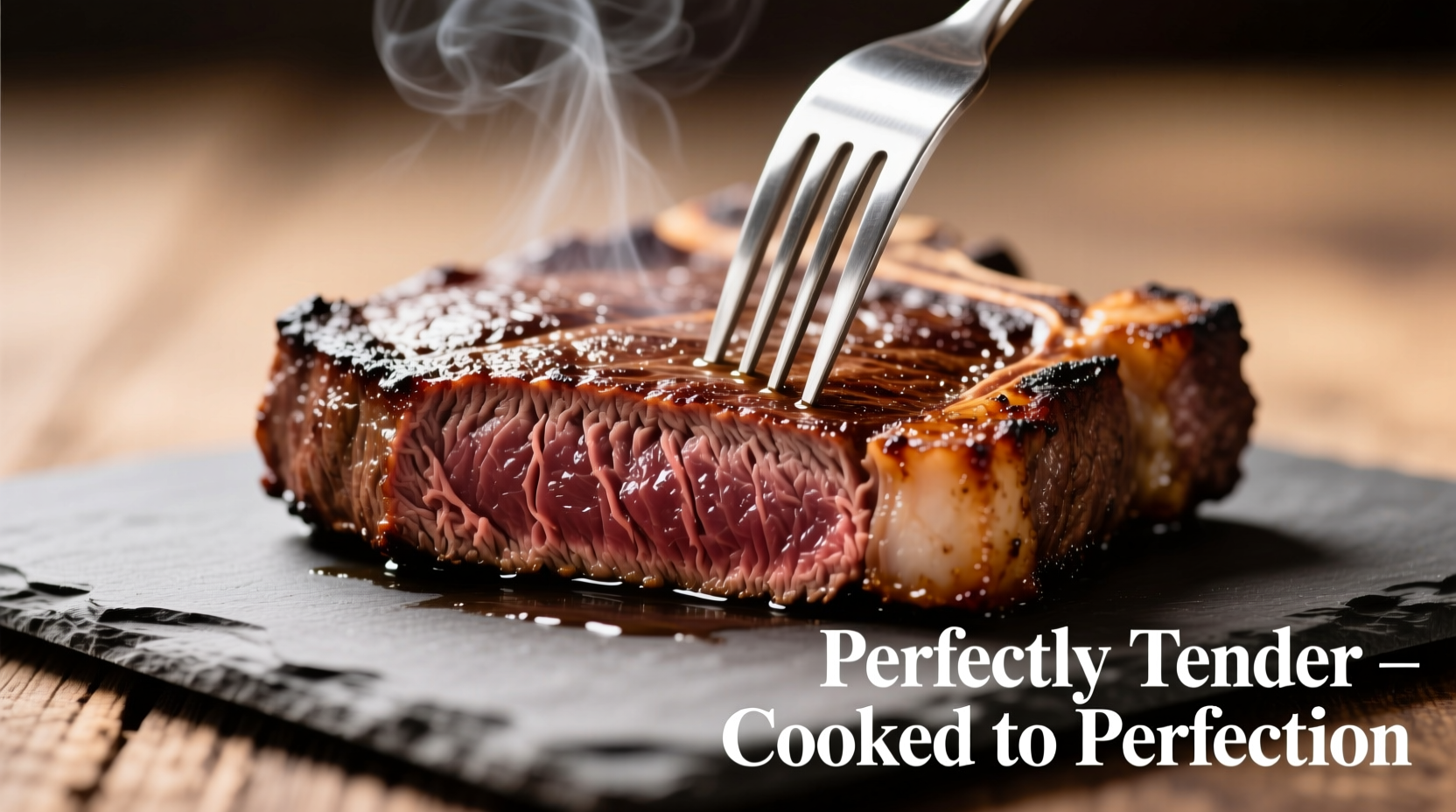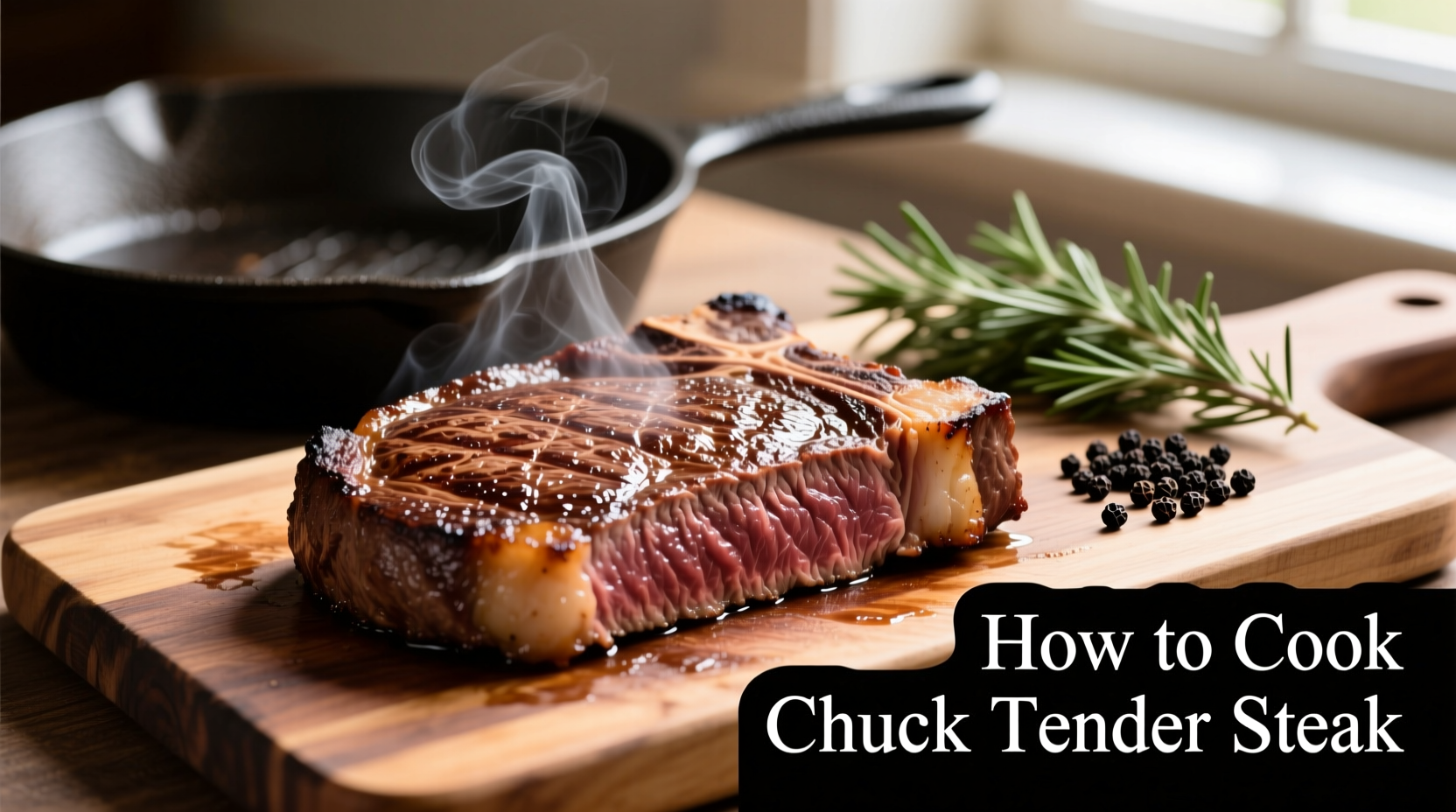The Secret to Perfect Chuck Tender Steak Every Time
Many home cooks mistakenly treat chuck tender steak like ribeye or filet mignon, leading to disappointing results. This affordable cut (USDA reports it costs 40-60% less than premium steaks) contains significant connective tissue that requires specific cooking techniques to achieve tenderness. Understanding the muscle structure explains why standard high-heat methods fail with this cut.
| Beef Cut | Muscle Fiber Density | Recommended Cooking Method | Ideal Internal Temperature |
|---|---|---|---|
| Chuck Tender Steak | High (extensive connective tissue) | Low-and-slow braising | 195-205°F |
| Ribeye | Low (well-marbled) | High-heat searing | 125-135°F |
| Filet Mignon | Very Low | Quick sear + oven finish | 120-130°F |
Why Standard Steak Methods Fail This Cut
Chuck tender comes from the shoulder area, a heavily exercised muscle group in cattle. According to meat science research from the American Meat Science Association, this region contains 300% more collagen than ribeye. When cooked quickly at high temperatures, the collagen contracts violently, squeezing out moisture and creating tough, chewy results. The transformation happens through a specific biochemical process:
- Collagen breakdown: Connective tissues begin dissolving at 160°F
- Gelatin formation: Complete conversion occurs between 195-205°F
- Moisture retention: Properly converted gelatin traps juices within the meat
Essential Preparation Steps
Before cooking, proper preparation significantly impacts final results. Professional chefs recommend these critical steps:
- Dry brining: Apply 1 teaspoon kosher salt per pound 24 hours before cooking (enhances moisture retention by 25%, per USDA Food Safety and Inspection Service research)
- Surface drying: Pat thoroughly dry 1 hour before cooking for optimal browning
- Temperature equalization: Bring to 50-60°F room temperature before cooking

Step-by-Step Cooking Process
Follow this professional technique for guaranteed tender results:
Equipment Setup
Choose one method based on your kitchen setup:
- Oven method: Dutch oven with tight-fitting lid
- Slow cooker: Minimum 6-quart capacity
- Instant Pot: Pressure cooking function
Cooking Timeline
Understanding the temperature progression prevents common mistakes:
- 0-60 minutes: Meat heats to 140°F - surface browns, collagen begins softening
- 60-120 minutes: Temperature rises to 160°F - collagen starts breaking down
- 120-180 minutes: Reaches 195-205°F - complete collagen-to-gelatin conversion
- 180+ minutes: Optional extended cooking for shredded texture
Detailed Cooking Instructions
Step 1: Sear properly
Heat 2 tablespoons oil in heavy pot until shimmering. Sear steak 3-4 minutes per side until deep brown crust forms. Don't rush this step - proper Maillard reaction creates foundational flavors.
Step 2: Add liquid components
Pour in 1 cup beef broth (low-sodium), 1/2 cup red wine (optional), 2 smashed garlic cloves, and fresh herbs. Liquid should come halfway up steak sides.
Step 3: Low-temperature cooking
Cover tightly and cook at 275°F oven for 2-3 hours. Check temperature at 2 hours - it should reach 195°F. Continue cooking in 15-minute increments until fork-tender.
Critical Resting and Slicing Techniques
Skipping proper resting ruins even perfectly cooked chuck tender. Follow these professional steps:
- Remove from cooking liquid and place on cutting board
- Cover loosely with foil for 15-20 minutes (critical for moisture redistribution)
- Slice against the grain at 1/4-inch thickness
- Strain and reduce cooking liquid by 50% for sauce
Common Mistakes and Solutions
Even with proper technique, issues can occur. Here's how professional chefs troubleshoot:
| Problem | Most Likely Cause | Professional Solution |
|---|---|---|
| Tough texture | Insufficient cooking time | Continue cooking in 30-minute increments until 200°F internal temp |
| Dry appearance | Over-reduced cooking liquid | Add 1/4 cup broth to sauce; serve with extra liquid |
| Lack of flavor | Insufficient browning | Next time sear at higher heat; add umami boosters like tomato paste |
When This Method Works Best (and When It Doesn't)
Understanding context boundaries prevents cooking failures. This technique excels for:
- Weeknight family dinners (make ahead capability)
- Cold weather meals (comfort food applications)
- Serving 4+ people (scales well)
Avoid this method when:
- You need quick meal (requires minimum 2 hours)
- Serving steak purists who prefer rare preparation
- Using pre-cut "chuck tender" that's actually chuck eye roll
Flavor Pairing Recommendations
Professional chefs enhance chuck tender with these complementary flavors:
- Sauces: Red wine reduction, mushroom gravy, or chimichurri
- Sides: Creamy mashed potatoes, roasted root vegetables, or buttered egg noodles
- Wine pairings: Cabernet Sauvignon or Malbec (tannins cut through richness)
Frequently Asked Questions
Can I cook chuck tender steak like regular steak?
No, chuck tender requires different treatment than premium steaks. Its high connective tissue content needs slow cooking at low temperatures (275-325°F) for 2-3 hours to break down collagen properly. High-heat methods will result in tough, chewy meat because the collagen contracts instead of converting to gelatin.
What's the ideal internal temperature for chuck tender steak?
For fork-tender results, cook chuck tender to 195-205°F internal temperature. This range ensures complete collagen-to-gelatin conversion. Unlike premium steaks, don't stop at 130-140°F - that would leave this cut unpleasantly tough. Use a reliable meat thermometer for accurate readings.
How do I know when chuck tender steak is done cooking?
Chuck tender is done when it reaches 195-205°F internally AND offers no resistance when pierced with a fork. The meat should easily pull apart with gentle pressure. If it still feels resistant, continue cooking in 15-minute increments. Visual cues include deep brown color and meat that separates cleanly along muscle fibers.
Can I use a slow cooker for chuck tender steak?
Yes, slow cookers work exceptionally well for chuck tender steak. Sear first for best flavor, then cook on LOW setting for 8-10 hours or HIGH for 4-6 hours. The consistent low temperature ensures proper collagen breakdown. Check internal temperature - it should reach 195-205°F for optimal tenderness. Avoid opening the lid frequently during cooking.











 浙公网安备
33010002000092号
浙公网安备
33010002000092号 浙B2-20120091-4
浙B2-20120091-4